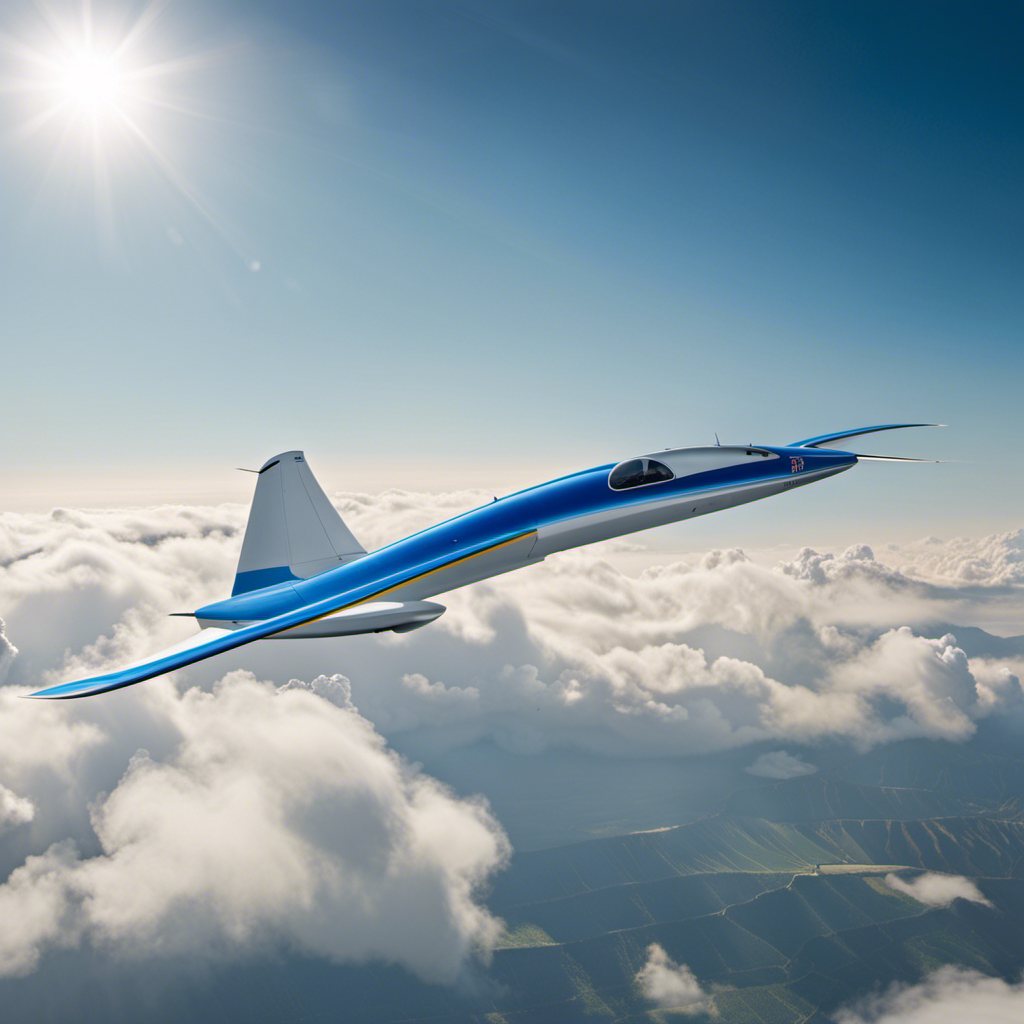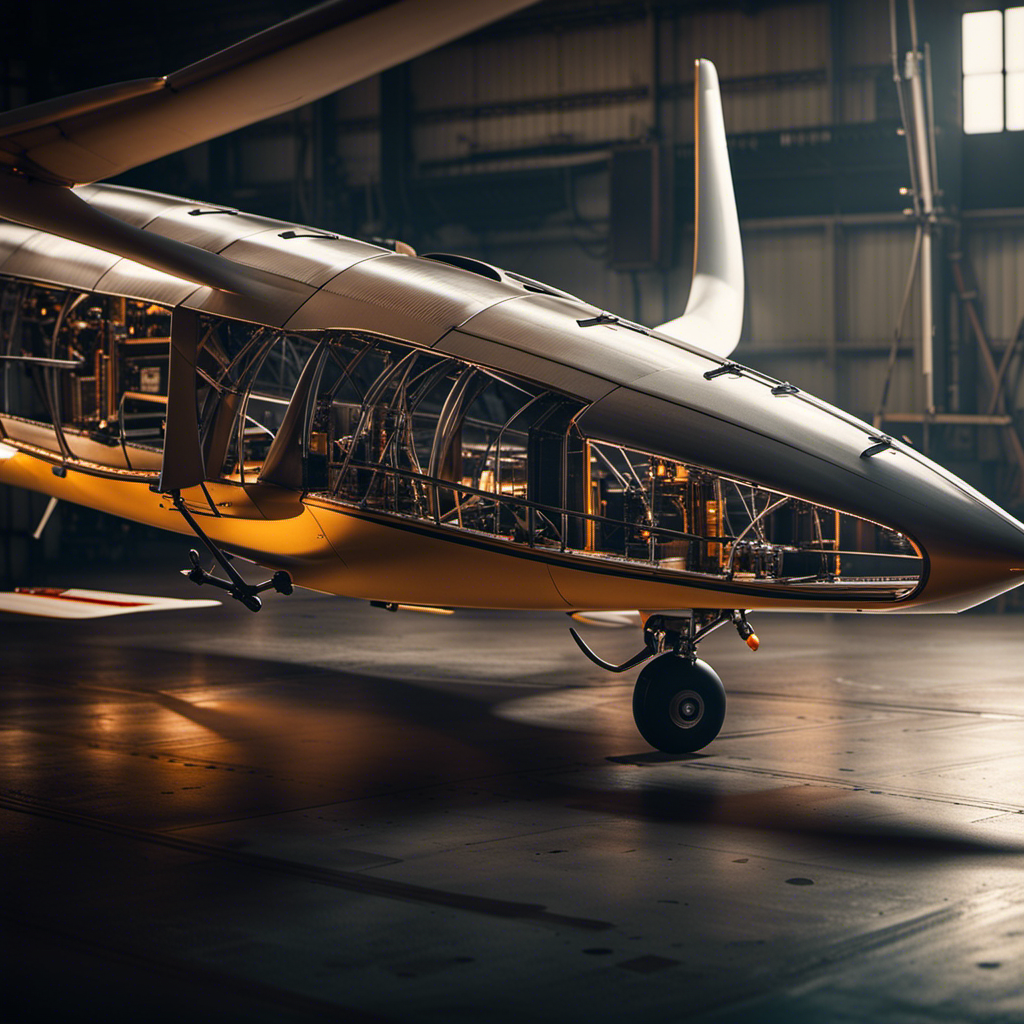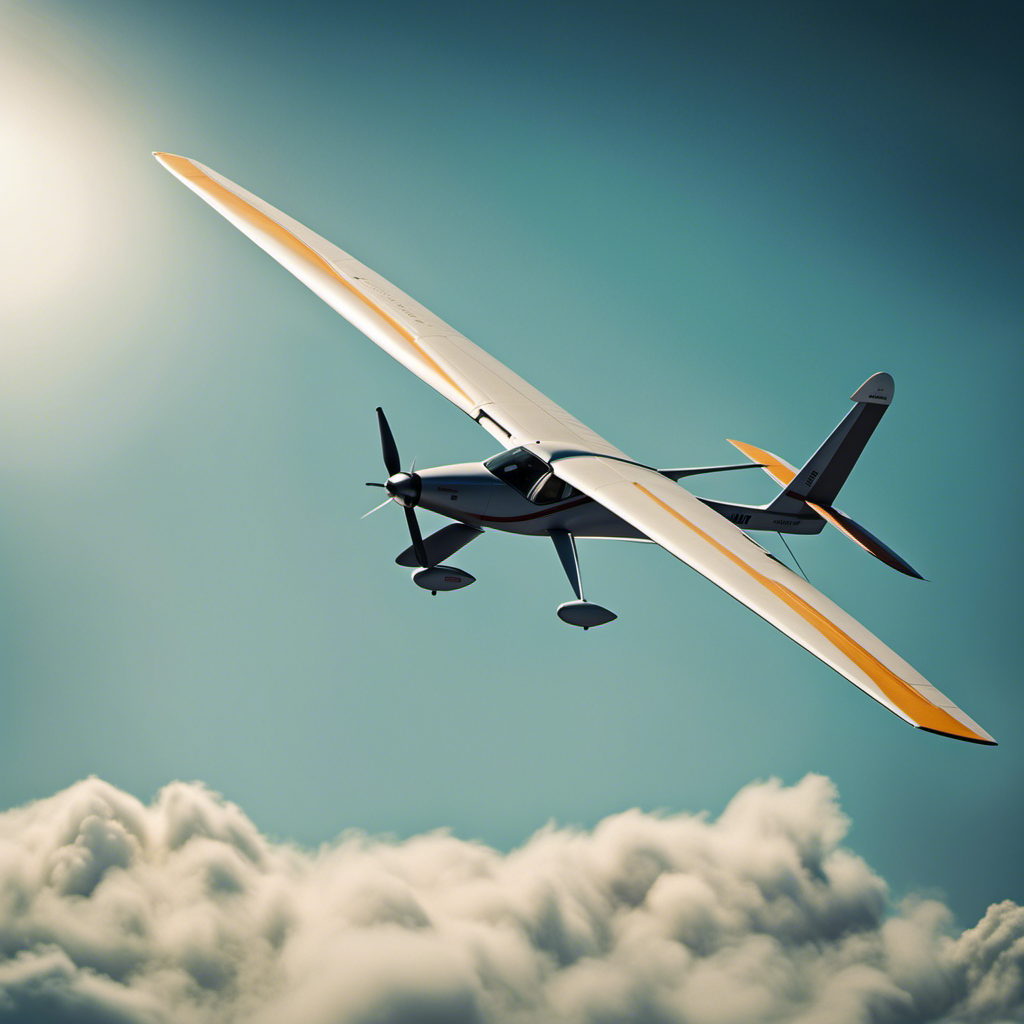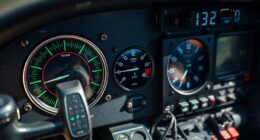Picture yourself soaring high above, gliding effortlessly through the sky. Have you ever wondered what enables airplanes to sustain such smooth and stable flight?
In this article, we will delve into the intricacies of the steady gliding flight envelope. You will gain a comprehensive understanding of its definition, the crucial role it plays in aircraft design, and the various factors that affect it.
Join us as we explore the fascinating world of the steady gliding flight envelope and its applications in aviation.
Key Takeaways
- Steady gliding flight envelope is defined as the speed that covers maximum horizontal distance with least descent rate.
- It is important in emergency situations with engine failure as it allows for safe landing planning and execution.
- Steady gliding flight envelope helps optimize fuel efficiency by identifying the most efficient glide speed.
- It assists in making informed decisions about diversion airports and helps determine glide distances and emergency procedures.
Understanding the Basics of Flight Envelopes
Understanding the basics of flight envelopes is essential for you as a pilot to safely navigate the skies. The flight envelope refers to the range of conditions within which an aircraft can operate safely and efficiently. It consists of various performance limitations such as maximum and minimum speeds, altitude limits, and load factors. By understanding these limitations, you can ensure that you operate the aircraft within its designed capabilities, avoiding any potential dangers.
The flight envelope is determined by factors such as the aircraft’s design, weight, and aerodynamic characteristics. It is crucial to familiarize yourself with the flight envelope of the specific aircraft you are piloting, as different aircraft have different performance capabilities.
Now, let’s delve into the next section and define the steady gliding flight envelope.
Defining the Steady Gliding Flight Envelope
Defining the steady gliding flight envelope involves determining the range of conditions in which an aircraft can maintain a smooth and controlled descent. This envelope is crucial in understanding the aircraft’s performance capabilities and limitations.
It encompasses various factors, such as airspeed, altitude, angle of attack, and weight. The flight envelope defines the boundaries within which the aircraft can operate safely and efficiently during gliding flight. It is determined through extensive flight testing and analysis, considering factors like stall speed, maximum glide ratio, and maximum descent rate.
By defining the flight envelope, aircraft designers can ensure that the aircraft is capable of maintaining a stable and controlled descent under various conditions. This knowledge is vital for designing aircraft that can safely perform gliding maneuvers and emergency landings when engine power is lost or unavailable.
Transitioning to the next section, the importance of the flight envelope in aircraft design becomes evident when considering the need for optimal performance and safety.
Importance of the Flight Envelope in Aircraft Design
To fully comprehend the significance of the flight envelope in aircraft design, you need to consider its impact on performance and safety. The flight envelope is the range of safe and efficient flight conditions within which an aircraft can operate. It is crucial for designers to understand and optimize the flight envelope to ensure optimal performance and safety of the aircraft.
Here are two important reasons why the flight envelope is of utmost importance:
-
Performance: The flight envelope determines the maximum speed, altitude, and maneuverability of an aircraft. By optimizing the flight envelope, designers can enhance the overall performance of the aircraft, allowing it to fly faster, climb higher, and maneuver more effectively.
-
Safety: The flight envelope also plays a crucial role in ensuring the safety of the aircraft and its occupants. By defining the limits of the flight envelope, designers can prevent the aircraft from operating in unsafe conditions, such as exceeding its structural limits or encountering aerodynamic instability.
Understanding the importance of the flight envelope is essential for designing aircraft that meet performance requirements while ensuring the highest level of safety.
This leads us to the subsequent section about the factors that affect the steady gliding flight envelope.
Factors Affecting the Steady Gliding Flight Envelope
One important factor that affects the steady gliding flight envelope is the aircraft’s weight distribution. The distribution of weight across an aircraft plays a crucial role in determining its stability and maneuverability during a gliding phase.
When an aircraft is in steady gliding flight, the location of its center of gravity (CG) influences its pitch stability and control. If the CG is too far forward, the aircraft may have a tendency to pitch up excessively, causing a loss of control. On the other hand, if the CG is too far aft, the aircraft may become difficult to control and prone to a nose-down pitch.
Achieving the optimal weight distribution is essential for maintaining the steady gliding flight envelope.
This leads us to the next topic: the relationship between performance and efficiency in aircraft design.
The Relationship Between Performance and Efficiency
Achieving the optimal weight distribution in an aircraft is crucial for maintaining its performance and efficiency. When the weight is distributed correctly, the aircraft can achieve better aerodynamic stability, fuel efficiency, and overall handling. Here are four reasons why achieving the optimal weight distribution is important:
-
Improved Safety: Proper weight distribution ensures that the aircraft remains balanced during flight, reducing the risk of instability and potential accidents.
-
Enhanced Maneuverability: With the correct weight distribution, the aircraft can respond more effectively to control inputs, allowing for smoother and more precise maneuvers.
-
Increased Fuel Efficiency: By distributing the weight evenly, the aircraft can reduce drag and improve its fuel efficiency, resulting in cost savings and reduced environmental impact.
-
Better Performance: Optimal weight distribution allows the aircraft to operate within its designed limits, maximizing its performance capabilities and ensuring optimal handling characteristics.
Understanding the relationship between performance and efficiency is crucial in calculating and analyzing the flight envelope.
Calculating and Analyzing the Flight Envelope
Calculating and analyzing the flight envelope helps you, as a pilot or aircraft engineer, determine the safe operating limits of an aircraft. By understanding the flight envelope, you can ensure that your aircraft operates within its designed capabilities, preventing dangerous situations and optimizing performance. To calculate the flight envelope, you need to consider various factors such as weight, altitude, temperature, and speed. These parameters help you determine the maximum and minimum values for key variables like airspeed, angle of attack, and load factor. By analyzing the flight envelope, you can identify the boundaries within which the aircraft can safely operate and make informed decisions during flight. Understanding the flight envelope is crucial for ensuring the safety and efficiency of your aircraft.
The steady gliding flight envelope has various applications that can help you during flight. This envelope allows you to determine the best glide speed, which is the speed at which your aircraft can cover the maximum horizontal distance with the least descent rate. It also helps you calculate the glide ratio, which is the ratio of horizontal distance traveled to vertical distance descended during a glide. Knowing these parameters can be useful in emergency situations where the engine has failed, as it allows you to plan and execute a safe landing. Additionally, the steady gliding flight envelope can help you optimize fuel efficiency by identifying the most efficient glide speed for your aircraft.
Applications of the Steady Gliding Flight Envelope
To apply the steady gliding flight envelope, you can use the information obtained to determine the best glide speed and calculate the glide ratio, which are crucial in emergency situations where the engine has failed. By understanding and utilizing the steady gliding flight envelope, you can optimize your aircraft’s performance while in glide.
Here are three key applications of the steady gliding flight envelope:
-
Emergency Situations: When faced with an engine failure, the steady gliding flight envelope helps you determine the optimal glide speed to maintain the maximum range and endurance.
-
Fuel Efficiency: By employing the steady gliding flight envelope, you can calculate the glide ratio, which allows you to minimize fuel consumption during extended gliding phases or when seeking an alternate landing site.
-
Navigation and Planning: The steady gliding flight envelope provides valuable information for flight planning and navigation, enabling pilots to make informed decisions about diversion airports, glide distances, and emergency procedures.
Understanding these applications is essential for pilots to handle emergency situations effectively and make strategic decisions in flight. Advancements and innovations in flight envelope technology have further enhanced these capabilities, improving aircraft safety and efficiency.
Advancements and Innovations in Flight Envelope Technology
As you explore the advancements and innovations in flight envelope technology, you will discover a world of possibilities that push the boundaries of what was once thought possible in aviation. Engineers and researchers have been tirelessly working to enhance the capabilities and performance of aircraft, resulting in exciting developments that revolutionize the concept of the flight envelope. One notable advancement is the integration of advanced materials, such as carbon fiber composites, which offer superior strength and weight savings. Additionally, advancements in aerodynamic design, propulsion systems, and control mechanisms have allowed for increased maneuverability and efficiency. To provide a clearer picture of these advancements, the following table showcases some key innovations in flight envelope technology:
| Innovation | Description | Benefits |
|---|---|---|
| Advanced Materials | Integration of carbon fiber composites for increased strength and weight savings | Improved structural integrity and fuel efficiency |
| Aerodynamic Design | Optimized wing shapes and profiles for enhanced lift and reduced drag | Improved maneuverability and fuel efficiency |
| Propulsion Systems | Implementation of more efficient engines and hybrid propulsion systems | Increased speed and fuel efficiency |
| Control Mechanisms | Introduction of fly-by-wire systems and advanced control algorithms for precise and responsive flight control | Enhanced maneuverability and safety |
The advancements and innovations in flight envelope technology have opened up new possibilities for aircraft performance and capabilities. However, along with these advancements come challenges and limitations that must be addressed.
Challenges and Limitations of the Flight Envelope Concept
When exploring the challenges and limitations of the flight envelope concept, you may encounter factors that can impact an aircraft’s performance and capabilities.
The flight envelope represents the range of conditions and limitations within which an aircraft can safely operate.
Here are three key challenges and limitations to consider:
-
Aerodynamic Limits: Every aircraft has a maximum operational speed, known as VMO, and a maximum Mach number, known as MMO. Exceeding these limits can result in structural damage or loss of control.
-
Weight and Balance: Proper weight distribution is crucial for stable flight. If an aircraft is loaded beyond its maximum takeoff weight or its center of gravity is outside the acceptable range, it can affect maneuverability and stability.
-
Environmental Factors: Weather conditions such as high winds, turbulence, and icing can significantly impact an aircraft’s performance and limit its ability to operate within the flight envelope.
Understanding and addressing these challenges can lead to safer and more efficient flight operations.
Looking ahead, advancements in technology and improved understanding of aerodynamics will continue to shape the future trends and developments in flight envelope optimization.
Future Trends and Developments in Flight Envelope Optimization
You can expect advancements in technology and a deeper understanding of aerodynamics to shape the future of optimizing the flight envelope.
As we move forward, there are several key areas where significant progress can be made.
Firstly, improvements in materials and manufacturing techniques will enable the development of lighter and more efficient aircraft structures. This will lead to increased fuel efficiency and extended range.
Secondly, advancements in propulsion systems will allow for greater thrust and improved performance, enabling aircraft to operate in a wider range of flight conditions.
Additionally, the development of more advanced control systems and sensors will enhance the ability to monitor and adjust the aircraft’s flight parameters in real-time, optimizing the flight envelope for maximum efficiency and safety.
Lastly, the application of artificial intelligence and machine learning algorithms will enable more precise and accurate predictions of the flight envelope, allowing for better decision-making and optimization.
With these advancements, the future of flight envelope optimization looks promising, leading to more efficient and safer aircraft operations.
Frequently Asked Questions
What is the history of the concept of flight envelopes?
The concept of flight envelopes has evolved over time. It originated from the need to define the safe operating limits of an aircraft. Engineers and researchers have continuously refined and expanded the understanding of flight envelopes to ensure optimal performance and safety.
How does weather conditions affect the steady gliding flight envelope?
Weather conditions can significantly impact the steady gliding flight envelope. Factors like wind speed, direction, and turbulence can affect the aircraft’s performance, stability, and control. It is crucial for pilots to consider these conditions to ensure safe and efficient flights.
Are there any regulations or guidelines that dictate the boundaries of the flight envelope?
Yes, there are regulations and guidelines that dictate the boundaries of the flight envelope. These regulations ensure the safety of aircraft operations and include factors such as airspeed limitations, altitude limits, and load restrictions.
How does the shape or design of an aircraft affect its steady gliding flight envelope?
The shape or design of an aircraft greatly influences its steady gliding flight envelope. Factors such as wing shape, aspect ratio, and drag coefficient determine the aircraft’s ability to maintain steady glide without power.
Can the steady gliding flight envelope be modified or expanded through technological advancements?
Technological advancements have the potential to expand and modify the steady gliding flight envelope. By improving aircraft design, such as aerodynamics and materials, engineers can enhance performance and extend the range of possible flight conditions.
Conclusion
In conclusion, the steady gliding flight envelope is a crucial concept in aircraft design. It serves as a fundamental guide for optimizing performance and efficiency. By understanding the factors that affect the flight envelope, engineers can push the boundaries of innovation and develop advanced technologies.
However, it is important to acknowledge the challenges and limitations associated with this concept. As we look towards the future, trends and developments in flight envelope optimization will continue to shape the aviation industry. This will pave the way for safer and more efficient flights.
Soar high, embrace the limitless possibilities of flight, and let the steady gliding flight envelope be your guiding light.









